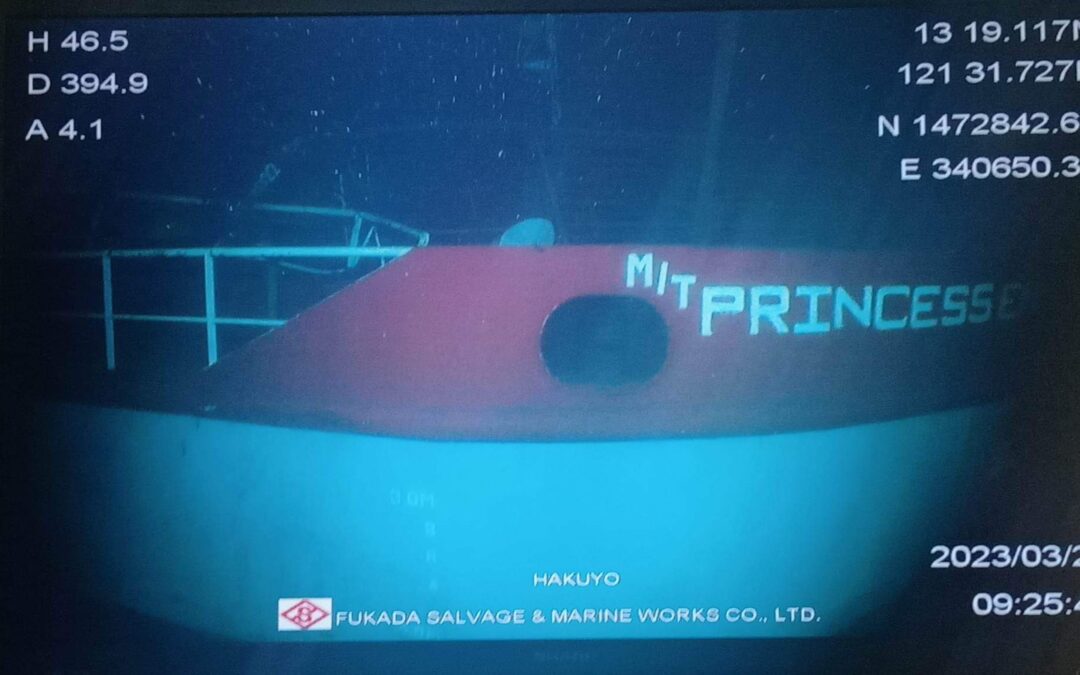A Japanese remotely-operated vehicle (ROV) has found that the tanker Princess Empress, which sank off the Philippines in February, is leaking oil from all eight tanks. Meanwhile, the US Coast Guard will help the Philippine Coast Guard with the oil spill response.
The Princess Empress departed from Bataan en route to Iloilo with twenty crew members (including the master) and approximately 800,000 liters of industrial fuel oil on board. It then encountered engine trouble due to overheating. The crew was evacuated and the tanker sank on 28 February.
Also read: Philippines launches oil spill response after tanker sinks
Structural damage
The Japanese ROV found out that the oil tanker, M/T Princess Empress, ‘suffered extensive structural damage after sinking,’ reported Senior Undersecretary Carlito Galvez Jr., Officer-in-Charge of the Department of National Defense, to the Philippine News Agency, the Philippine government’s official newswire service.
Citing findings of the Japanese team, he said there was no visible consumption fuel leak coming from the damaged vessel. However, oil leaks were observed from all eight compartments (tanks).
Through ballast tanks, the volume of remaining oil inside the compartments cannot be estimated at this point. The oil spillage rate from the source is likewise yet to be determined.
Galvez: ‘We continue to closely monitor the ROV operations for significant updates and to further determine the extent of the oil spill,’ he added.
Also read: PCG collects 6600 litres of oil at Princess Empress wreck site
USCG assistance
The United States Coast Guard (USCG) and some of its air assets will assist in the ongoing cleanup operations on the massive oil spill in Mindoro.
Galvez has reported that USCG and the US Air Force’s largest strategic airlifter will be arriving in the country in the following days, according to a news release of the Presidential Communications Office on Sunday.
‘We are looking forward to the arrival of the entire US Coast Guard contingent for the additional technical support in our disaster response operations. Although one US C-17 with equipment (60K loader) already arrived this morning (26 March, ed.) and is now at Subic Air Base, another C-5 is expected to arrive. We will immediately employ these assets and integrate them into our response operations,’ Galvez said.
NOAA provides oil spill modelling
Galvez likewise noted that the presence of the US National Oceanic and Atmospheric Administration (NOAA) has considerably helped in the cleanup operations by providing rapid environmental assessments of the affected areas, identification of priority areas at risk of environmental damage, and assessment of the needs for ecosystem restoration.
‘They (NOAA, ed.) provide support for scientific modeling to estimate the trajectory of the oil spill and satellite imagery to boost assessment efforts,’ Galvez said.
Also read: Oil spill Philippines not abating, while wreck likely located
Oil spill response
Galvez has noted that the situation in affected areas in Mimaropa (Mindoro, Marinduque, Romblon, Palawan) and Western Visayas regions have been better and more encouraging so far due to response efforts of various government agencies and collaboration of all stakeholders.
A total of 10,206 litres of oil waste and oily water and 72,643 kilos of oil-contaminated debris have been collected in the shoreline cleanup operations.
To date, the Marcos administration and non-government organisations have already extended more than PHP 95 million (over EUR 1.6 million) worth of assistance to the residents in the areas affected by the oil spill.
Picture: Footage of the Empress Princess wreck taken by the Japanese DPV team that conducted ROV operations (released by the Philippine Coast Guard).








